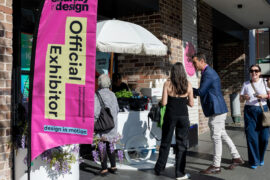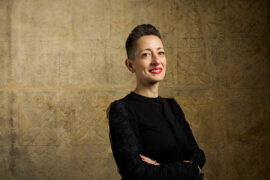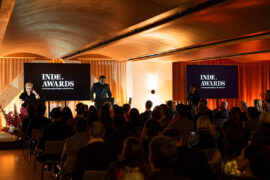Boomers, Millennials, Gen X… here’s what we really mean when we talk about generations in the workplace.

May 23rd, 2018
Has any generation been more maligned than millennials? In recent years, people born between the early 1980s and 2000s have been subject to an astounding amount of ire, attracting the blame for everything from the death of the napkin industry to the declining popularity of McDonald’s. While it’s fair to say that millennials differ from their predecessors in multiple, often significant, ways, there’s no denying that generational overlaps have long been a source of anxiety and complaints. That millennials are the subject of bewildered (and sometimes barbed) observation is unsurprising: in many ways, it’s merely the latest in a long history of generations failing – or refusing – to understand their successors.
Still, it is increasingly evident that understanding millennials and their idiosyncrasies is critical. This is particularly true in the workplace, with global workforce experts ManPowerGroup predicts that millennials will comprise the majority of the global workforce by 2020. Presently, the Australian workforce is comprised of 4.1 million Baby Boomers, 4.8 million Generation Xers, and 4.9 million Millennials. The shift toward a millennial majority is already underway, and has had a marked, rapid impact on global workplace culture – think: remote working, the ubiquity of mobile devices, and growing reliance on technology. Millennials, it seems, are driving forces behind the workplaces of tomorrow. Against this backdrop, it’s easy to forget about the other demographics that remain represented in offices around the world: Baby Boomers, Generation X, and Generation Z, the latter of which has only just begun to enter the workforce.
Given the dizzying number of buzzwords tossed around in discussions about changing workplace demographics, it’s not hard to get the generations confused. Below, we give you a quick rundown of the generations in the workforce today and highlight the key characteristics that designers and specifiers must take into account to accommodate their respective needs.
Baby Boomers were born between 1946 and 1964, and are the oldest generation in the workforce today. Often unfairly saddled with being resistant to change, technophobic, and refusing to upskill, Baby Boomers are traditionalists who prefer to stick to the conventional workplace model. In a practical sense, this means a clear workplace hierarchy, a conservative approach to furniture and technology use, and a stronger desire to work independently.
Generation X encompasses everyone born between 1965 and 1981, and marks the turning point toward work-life balance, a do-it-yourself attitude, and an open arm embrace of change. Though not quite as flexible as the generations succeeding them, Generation X is more adaptable than Baby Boomers, and value diversity, creativity, and a good challenge. What’s more, they’re open to embracing new technology and support the notion of flexibility within the workplace.
Millennials were born between 1980 and 1994, and are fast becoming the largest group in the workforce. The millennial pathway to the workforce has been shaped by a complex interplay of factors that includes the ubiquity of technology, unstable economies, and massive shifts in the overall global culture of production and industry. As a consequence, millennials in the workforce tend to be agile, adaptable, and tech-reliant, and expect each of these in turn from their workspaces. According to PwC, millennials prefer to communicate digitally, with 41 per cent preferring electronic means over in-person or telephonic communications.
Gen Z is the latest generation to enter the workforce, and bears many of the characteristics of millennials. Having grown up during the 2008 financial crisis – one of the biggest such crises in recent memory – they tend to be more cautious and less optimistic than their predecessors, and are even more tech savvy.
Though the mix of generations in today’s workplaces is undeniably positive in terms of encouraging diversity of composition, thought, skills, and subsequent output, it is not without its pitfalls. The different generations have differing views on many key issues, and these may clash and cause conflict.
Thankfully, a number of design-based solutions can help alleviate the pressures resulting from intergenerational tension. Rather than muting differences between the generations, design should celebrate these while attempting to gently coax workers toward common ground. The provision of choice is critical: employees should feel that their needs are catered to and that they are able to make change incrementally, instead of being forced into it. Providing a selection of work settings as part of an ABW model, for example, allows workers to choose the mode of work that suits them best, while adjustable furniture gives everyone control over their own comfort – within set ergonomic parameters. As architectural firm Gensler’s Design Forecast 2017 puts it: “brands with strong values build strong ties to their mission through workplace design.”
Overall, the specification process should be carefully considered to maximise flexibility, be this through fit-out, furniture selection, or the design of the floor plan itself. The needs and preferences of all workplace generations must be taken into account, and radical design steps must be paired with a rigorous change management strategy and proper support.
INDESIGN is on instagram
Follow @indesignlive
A searchable and comprehensive guide for specifying leading products and their suppliers
Keep up to date with the latest and greatest from our industry BFF's!

Gaggenau’s understated appliance fuses a carefully calibrated aesthetic of deliberate subtraction with an intuitive dynamism of culinary fluidity, unveiling a delightfully unrestricted spectrum of high-performing creativity.

A longstanding partnership turns a historic city into a hub for emerging talent

Mark Tuckey X Main Studio embrace the future with a new range of furniture that showcases the beauty of agroforestry timber.

Collingwood is one of three precincts at Saturday Indesign 2025 on 6th September – find out what’s on there!
The internet never sleeps! Here's the stuff you might have missed

As French-Lebanese Architect Lina Ghotmeh prepares for lectures in Melbourne and Sydney, we hear about the philosophy shaping her internationally celebrated practice.

The 2025 INDE.Awards winners were celebrated at the annual Gala in Sydney on 31st July.